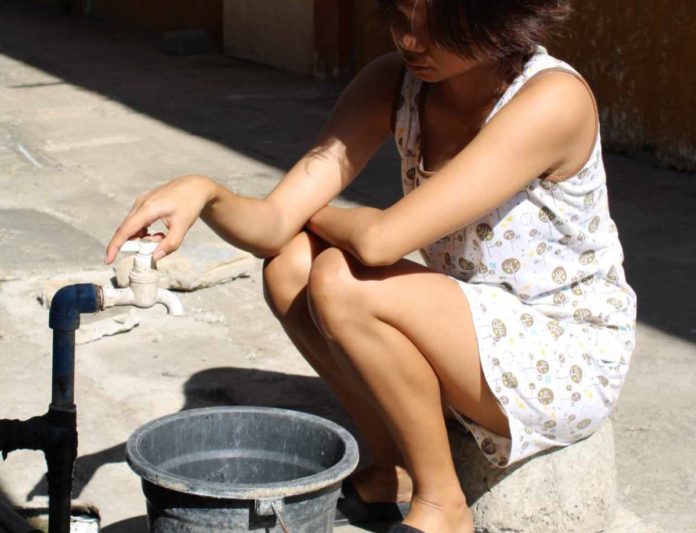
BY IME SORNITO, MA. THERESA LADIA and NYARIKA DOMINAIS
ILOILO City – As the city swelters under the oppressive heat of summer, its residents face the compounded misery of an acute water shortage.
This crisis has arisen following service disruptions from Metro Pacific Iloilo Water (MPIW), the primary water distributor for Iloilo City and several neighboring municipalities.
The scarcity of water has forced many to alter their daily routines drastically, enduring sleepless nights just to gather enough water for basic needs.
Apple Joy Rocio, 39, from Barangay San Juan in Molo district, voices her frustration over the situation that has escalated since March.
“The water trickles out so weakly,” she says.
Her husband’s nightly vigil from 1 a.m. to 4 a.m. to collect water accentuates the gravity of their plight — if he misses these hours, the day starts without water for cooking or cleaning.
“Sometimes, he waits and nothing comes out of the faucet. It’s utterly disheartening,” Rocio adds.
She has resorted to fetching water from a neighbor’s house for laundry and other essentials, urging the local water district and city government to prioritize and resolve these hardships.
Similarly, Robert Dequilla from Barangay Boulevard finds the sporadic water supply nearly unbearable.
“The water runs maybe three nights a week, forcing us to stay up late to catch it,” Dequilla explains.
His long-standing struggle with water scarcity actually predates the current seasonal spike due to the not-so-satisfactory service of the water utility, adding to his frustration.
Chona Landerio of Zone 1, Barangay Ungka in Jaro district, describes her predicament as a disruptive cycle of uncertainty.
“Water flow is so erratic — it might stop at 11 a.m. and not return until the next morning,” she says.
Landerio has installed a storage tank and sometimes must rely on her neighbor’s goodwill to ensure her family does not run dry.
In the City Proper, Natasha Eseller, a student and apartment resident on General Luna Street, recounts almost two weeks without a drop from her tap.
“We used to have a schedule, but now, it’s just chaos,” she states.
The makeshift well in her building is her only alternative, which she finds unsuitable for bathing, adding stress to her academic life.
“It’s tough balancing school with the need to collect water early in the morning,” she laments, appealing for a reliable schedule from the water authorities.
John Carlo Cruz, also from Barangay Boulevard, shares his ordeal of daily water shortages that cease at 10 p.m., forcing reliance on unsafe well water and costly bottled water for cooking.
“We could really use some help with daily water rationing,” Cruz suggests, hoping for a systematic solution to mitigate their financial and physical drain.
A certain Helen from Barangay Ungka, Jaro district echoes the sentiment for urgent action, having installed a pump to manage without water for non-potable needs.
“It’s a constant struggle to ensure we have enough water for daily use,” she says, emphasizing the financial burden of purchasing mineral water for cooking.
Amid these personal stories of hardship, the City Disaster Risk Reduction and Management Council (CDRRMC) considers recommending a state of calamity.
Engineer Neil Ravena from the city’s General Services Office reports, “Nearly 30 percent of the population is affected.”
He stresses the urgency, given the state weather bureau’s forecast of continued below-normal rainfall due to the El Niño phenomenon.
The council is coordinating with MPIW and Balibago Waterworks System, Inc. to manage the distribution of water to the impacted communities, with an initial funding of P12 million proposed to address the crisis.
As residents like Rocio, Dequilla, Landerio, Eseller, Cruz, and Helen wait for relief from the ongoing drought, there’s a critical need for efficient water management and support at all levels of government./PN



